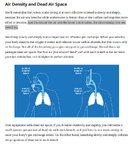Actually, it is 232 times atmospheric pressure compressed. One bar is one times atmospheric pressure. (That's 1013.25 millibar times 232 bar, or 14.7 psi times 232, or 3410.4 psig.)When the air in your tank is at 232bar, it is already 232 times compressed, but you don’t see the metal tank expanding when you fill it.
The tank is quite rigid so it can bear a certain amount of pressure.
Like others said, after the first stage, the gas you inhale will be at the ambiant pressure (which is function of your depth) but others explained better so I’ll leave it at this.
SeaRat




